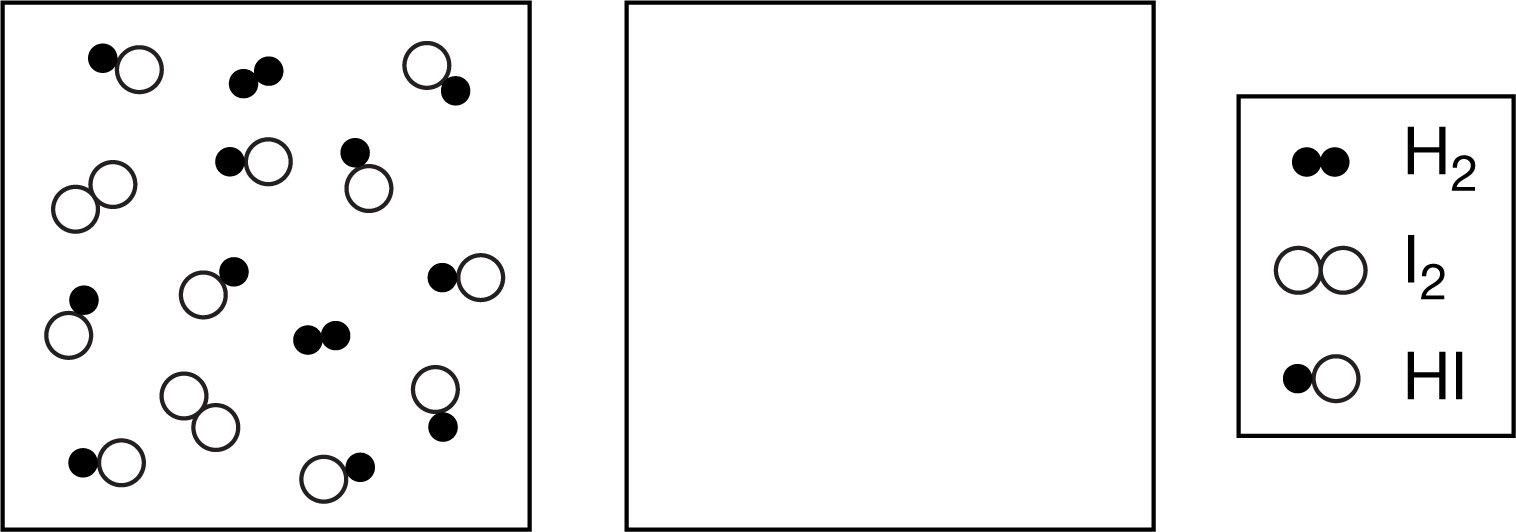| Gas | Initial Concentration (M) |
| H2 | 0.030 |
| I2 | 0.015 |
| HI | ? |
Samples of three gases, H2(g) , I2(g) , and HI(g) , were combined in a rigid vessel. The initial concentrations of H2(g) and I2(g) are given in the table above.
(a) The original value of the reaction quotient, Qc , for the reaction of H2(g) and I2(g) to form HI(g) (before any reactions take place and before equilibrium is established), was 5.56 . On the following graph, plot the points representing the initial concentrations of all three gases. Label each point with the formula of the gas.
Equilibrium was established at a certain temperature according to the following chemical equation.
H2(g)+I2(g)⇄2HI(g)ΔH°rxn=−9.4kJ/molrxn;Kc=49
After equilibrium was established, the concentration of H2(g) was 0.020M .
(b) On the graph above, carefully draw three curves, one for each of the three gases, starting from the initial points you drew in part ( a ). The curves must show how the concentration of each of the three gases changed as equilibrium was established.
H2(g) , I2(g) , and HI(g) are at equilibrium at a different temperature in a different vessel.
(c) When the temperature in the vessel is decreased, does the equilibrium shift to the right, favoring the product, or to the left, favoring the reactants? Justify your answer.
(d) Does the value of Kc increase, decrease, or remain the same when the temperature is decreased? Justify your answer based on the expression for Kc and the concentrations of the product and reactants.
(e) In the following empty box, draw an appropriate number of each type of molecule to represent a possible new equilibrium at the lower temperature.


Trending now
This is a popular solution!
Step by step
Solved in 6 steps with 4 images









